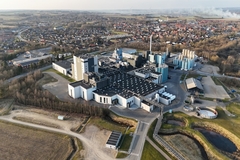
- Industry news
Industry news
- Category news
Category news
- Reports
- Key trends
- Multimedia
Multimedia
- Journal
- Events
- Suppliers
- Home
- Industry news
Industry news
- Category news
Category news
- Reports
- Key trends
- Multimedia
Multimedia
- Events
- Suppliers
Cracking egg prices: Avian Flu still impacting supply but relief may be on the way

09 Jan 2023 --- Stratospheric egg prices across countries are raising the question of when will the painful price rally abate and what the expectations are for the commodity into 2023, following a brutal 2022, which marked the first year on record with a fall in egg production. Aspects like Avian Flu, rising energy and feed costs are all taking their toll on egg prices.
There was a 4.6% production decline in the US and 3% in Europe, according to the French National Committee for the Egg Promotion (CNPO).
In the US, egg prices have escalated to unheard-of levels. According to the US Department of Agriculture, the combined regional large egg weekly average price reached US$5.4 for a dozen eggs in December, up from US$1.4 in March 2022 and from the three-year average that fluctuated around US$1.

Meanwhile, in the EU, prices for large and medium eggs were up 69.3% across the bloc from November 2021 to November 2022.
Egg prices have spiraled out of control mainly due to the Avian Flu outbreak, which is still causing a stir for the egg and poultry sectors. According to the US Center for Disease Control, the disease has affected 57.83 million birds in the country while the European Food Safety Authorities put the number of culled birds in Europe at 50 million.
“The complexity of the situation for 2023 will depend on the development of both Avian Flu and the War in Ukraine. If the number of hens lost decreases, egg production will increase or at least return to normal levels. But the question is when. That is quite uncertain,” a European Egg Processors Association (EEPA) spokesperson, tells FoodIngredientsFirst.
 Recent global outbreaks of HPAI have constrained egg supplies in the face of strong demand. Price peak?
Recent global outbreaks of HPAI have constrained egg supplies in the face of strong demand. Price peak?
The US egg price benchmark, the daily midwest regional eggs prices, is falling for all sizes of eggs and in prices paid to producers and delivered stores and warehouses.
Moreover, next week’s futures prices – for delivered eggs – are 55 cents lower for extra large, large and medium eggs (per dozen). The US Department of Agriculture also reports lower prices across all regions, although the demand for eggs is “moderate to fairly good.”
“There is a maximum which can be paid for an egg both in the industry as well as for consumption. It is not clear to EEPA if this level has been reached or not. For the industry the situation with the high egg prices is very complicated. If the egg prices rise too high, the egg products will be replaced by other (cheaper) products, and it takes quite some time to get back these markets in the food industry when the price returns to ‘normal’ levels,” explains the EEPA spokesperson.
The egg craze has led to consumers in some regions, like California, paying over US$7.3 for a dozen eggs, with demand continuing strong at those levels.
In the EU, the countries that are the most affected by inflating prices are Hungary (125.4%), Germany (106%) and the Netherlands (90.6%). Egg prices have stabilized in the bloc, not accelerating during the four weeks of December.
Besides the Avian Flu, the industry has been affected by increased production costs, including feeding hens.
“The price will depend mainly on the costs of soya and corn. The prices could be stable, but of course, the prices will not anymore be as the prices registered in the last years, so also the cost of production of the egg product will be higher than in the past,” says EEPA.
“Egg producers have been hit with huge hikes in production costs. Feeding hens is now at least 50% more expensive than it was, and energy prices have soared in the same way that consumers have seen their domestic bills rise. Spending on fuel has grown by 30%, while labor and packaging also cost more,” adds the British Free Range Egg Producers Association.
Food prices dip According to the USDA, the combined regional large egg weekly average price reached US$5.4 for a dozen eggs in December
According to the USDA, the combined regional large egg weekly average price reached US$5.4 for a dozen eggs in December
The Food and Agriculture Organization of the UN (FAO) food prices index declined for the ninth consecutive month in December, with commodity food prices being 1% lower in December than one year earlier.
However, in 2022, food prices were up 14.3% than their average value over 2021.
“Calmer food commodity prices are welcome after two very volatile years,” says Maximo Torero, FAO chief economist.
“It is important to remain vigilant and keep a strong focus on mitigating global food insecurity given that world food prices remain at elevated levels, with many staples near record highs, and with prices of rice increasing, and still many risks associated with future supplies,” he warns.
Prices of vegetable oils, cereals and meat declined last month, with a notable 6.7% dip in vegetable oil prices, driven by subdued global import demand and low crude oil prices.
On the other hand, dairy prices increased (1.2%) due to “tightening market conditions,” according to FAO. Sugar prices also rose (2.4%) due to concerns over adverse weather conditions on crop yields in India and sugarcane crushing delays in Australia and Thailand.
By Marc Cervera










